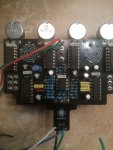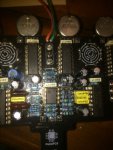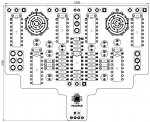quazimoto
New member
Greetings! Just finished this up yesterday and immediately I start to smell something during the trial run before boxing up. After further inspection it was a 10 ohm resistor just to the right of the TL072 OP Amp. The connection closest to the op amp has continuity with ground. I checked the board over with a jewelers lope to see if there was any solder bridges or something else touching and could not find anything. All the op amp pins are socketed and not touching anything. Any ideas? I don't believe this one had a schematic.









